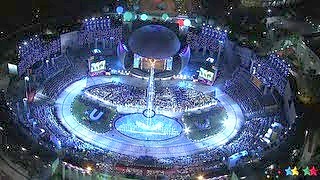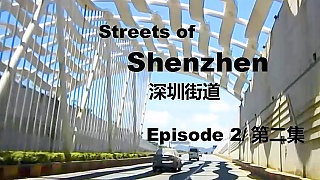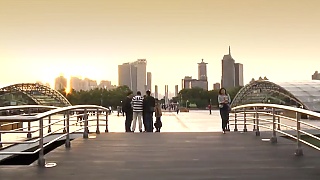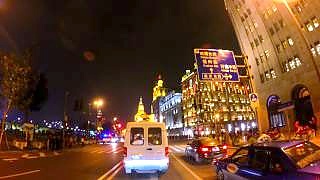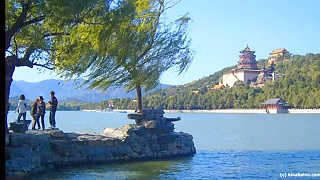Day Trips from Shenzhen, China
- Guangzhou 广州 (Guǎngzhōu): Explore the vibrant capital of Guangdong Province, known for its rich history, delicious Cantonese cuisine, and modern skyscrapers. Visit iconic landmarks such as the Canton Tower, stroll along the historic Shamian Island, and sample local delicacies at the bustling Shangxiajiu Pedestrian Street.
- Hong Kong 香港 (Xiānggǎng): Experience the dynamic cityscape of Hong Kong, just a short train ride away from Shenzhen. Explore attractions like Victoria Harbour, ride the Peak Tram to Victoria Peak for stunning city views, and indulge in shopping and dining in areas like Causeway Bay and Tsim Sha Tsui.
- Macau 澳门 (Àomén): Discover the unique blend of Portuguese and Chinese culture in Macau, known for its historic colonial architecture, vibrant casinos, and delicious egg tarts. Visit iconic landmarks such as the Ruins of St. Paul's, explore the historic streets of Senado Square, and try your luck at the famous casinos along the Cotai Strip.
- Dameisha Beach and Xiaomeisha Beach 大梅沙海滨公园 (Dàméishā Hǎibīn Gōngyuán) and 小梅沙海滨公园 (Xiǎoméishā Hǎibīn Gōngyuán): Relax and unwind at Dameisha and Xiaomeisha Beaches, popular seaside destinations located just outside of Shenzhen. Enjoy sunbathing on the golden sands, swimming in the clear waters of the South China Sea, and participating in water sports such as jet skiing and parasailing.
- Window of the World 世界之窗 (Shìjiè zhī Chuāng): Immerse yourself in a world of wonders at Window of the World, an amusement park in Shenzhen that features miniature replicas of famous landmarks from around the globe. Explore iconic sites such as the Eiffel Tower, the Taj Mahal, and the Great Wall of China, all within a single day.
- Shenzhen Safari Park 深圳野生动物园 (Shēnzhèn Yěshēng Dòngwùyuán): Get up close and personal with wildlife from around the world at Shenzhen Safari Park. Explore the park's vast grounds by tram or on foot, and encounter animals such as giant pandas, giraffes, and lions in naturalistic habitats.
- Fairy Lake Botanical Garden 仙湖植物园 (Xiānhú Zhíwùyuán): Escape the hustle and bustle of the city and immerse yourself in nature at Fairy Lake Botanical Garden. Explore lush gardens, serene lakes, and scenic hiking trails, and discover a diverse collection of plant species from China and around the world.
- Shekou Sea World 蛇口海上世界 (Shékǒu Hǎishàng Shìjiè): Spend a day exploring the attractions of Shekou Sea World, a waterfront entertainment complex in Shenzhen. Visit the Sea World Culture and Arts Center, enjoy shopping and dining at the Sea World Plaza, and discover marine life at the Sea World Aquarium.
- Shenzhen Museum 深圳博物馆 (Shēnzhèn Bówùguǎn): Dive into the history and culture of Shenzhen at the Shenzhen Museum. Explore fascinating exhibits on the city's evolution from a fishing village to a modern metropolis, learn about the region's archaeological treasures, and discover the cultural heritage of the local Hakka ethnic minority.
- Da Fen Oil Painting Village 大芬油画村 (Dà Fēn Yóuhuà Cūn): Discover the vibrant arts scene of Shenzhen at Da Fen Oil Painting Village, a community known for its talented artists and galleries. Watch artists at work in their studios, browse a wide range of original paintings and artworks, and purchase unique souvenirs to take home.
- Day Trip to Dongguan 东莞 (Dōngguǎn): Explore the nearby city of Dongguan, known for its manufacturing industry, cultural heritage, and natural attractions. Visit landmarks such as the Keyuan Garden, learn about traditional Cantonese opera at the Qifeng Park Opera Stage, and enjoy shopping at the bustling Dongguan Walking Street.
- Day Trip to Huizhou 惠州 (Huìzhōu): Discover the historic city of Huizhou, located along the Pearl River Delta and known for its ancient landmarks, scenic landscapes, and cultural heritage. Visit attractions such as the Luofu Mountain, explore ancient villages like Xingfu Village, and relax on the sandy shores of Xunliao Bay.
- Day Trip to Dongguan 东莞 (Dōngguǎn): Explore the nearby city of Dongguan, known for its manufacturing industry, cultural heritage, and natural attractions. Visit landmarks such as the Keyuan Garden, learn about traditional Cantonese opera at the Qifeng Park Opera Stage, and enjoy shopping at the bustling Dongguan Walking Street.
- Day Trip to Foshan 佛山 (Fóshān): Visit the historic city of Foshan, known for its centuries-old martial arts traditions, ancient temples, and traditional Cantonese culture. Explore attractions such as the Foshan Ancestral Temple, watch a demonstration of traditional lion dancing at the Foshan Lion Dance Museum, and visit the Nanfeng Ancient Kiln for a glimpse into the region's ceramic heritage.
- Day Trip to Zhuhai 珠海 (Zhūhǎi): Discover the coastal city of Zhuhai, located on the Pearl River Delta and known for its beautiful beaches, lush parks, and vibrant cultural scene. Visit attractions such as the New Yuanming Palace, stroll along Lover's Road for panoramic views of the coastline, and enjoy fresh seafood at the bustling Gongbei Seafood Street.
Shenzhen is a modern metropolis located in Guangdong Province, bordering Hong Kong to the south. Known as China's first Special Economic Zone, Shenzhen has transformed from a fishing village into a bustling city known for its innovation, technology, and vibrant culture. Here's what you need to know as a tourist visiting Shenzhen:
Modern Landmarks and Skyscrapers:
Shenzhen Bay Park: This expansive waterfront park offers stunning views of Shenzhen's skyline and the Hong Kong skyline across the bay. It's a popular spot for leisurely strolls, cycling, and picnics.
Shenzhen Civic Center: Admire the futuristic architecture of the Shenzhen Civic Center, which includes landmarks such as the Shenzhen Concert Hall, Shenzhen Library, and Shenzhen Museum.
Ping An Finance Centre: Marvel at one of the tallest skyscrapers in China and the fourth-tallest in the world, featuring an observation deck on the 116th floor offering panoramic views of the city.
Theme Parks and Entertainment:
Window of the World: Explore miniature replicas of famous landmarks from around the world, including the Eiffel Tower, the Taj Mahal, and the Great Wall of China, all in one place.
Happy Valley: This amusement park offers thrilling rides, live entertainment, and themed areas catering to visitors of all ages, making it a popular destination for families and thrill-seekers.
Shopping and Dining:
Huaqiangbei Electronics Market: Known as the world's largest electronics market, Huaqiangbei is a paradise for tech enthusiasts, offering everything from gadgets and components to accessories and repairs.
Coco Park: This upscale shopping and dining district features a wide range of boutiques, department stores, restaurants, bars, and cafes, catering to both locals and tourists.
Cultural and Historical Sites:
Dafen Oil Painting Village: Explore this vibrant artist community known for its reproduction oil paintings, where you can watch artists at work and purchase artworks at affordable prices.
Fairy Lake Botanical Garden: Escape the urban hustle and bustle at this expansive botanical garden, featuring lush greenery, scenic walking trails, and a diverse collection of plants and flowers.
Practical Tips:
Transportation: Shenzhen has a well-developed public transportation system, including the metro, buses, and taxis. The metro is the most convenient way to get around the city, with signs and announcements in both Chinese and English.
Language: Mandarin is the official language, but Cantonese and English are also widely spoken, especially in tourist areas, hotels, and restaurants.
Weather: Shenzhen has a subtropical climate with mild, dry winters and hot, humid summers. The best times to visit are spring (March to May) and autumn (September to November) when the weather is pleasant and comfortable.
Visa: Depending on your nationality, you may need a visa to enter China. Check the latest visa requirements and apply in advance if necessary.
Shenzhen offers a dynamic mix of modern attractions, cultural experiences, and shopping opportunities, making it an exciting destination for tourists seeking a taste of urban life in China. Whether you're interested in technology, entertainment, or simply exploring a vibrant city, Shenzhen has something for everyone.

 Day trips from ShenZhen
Day trips from ShenZhen



